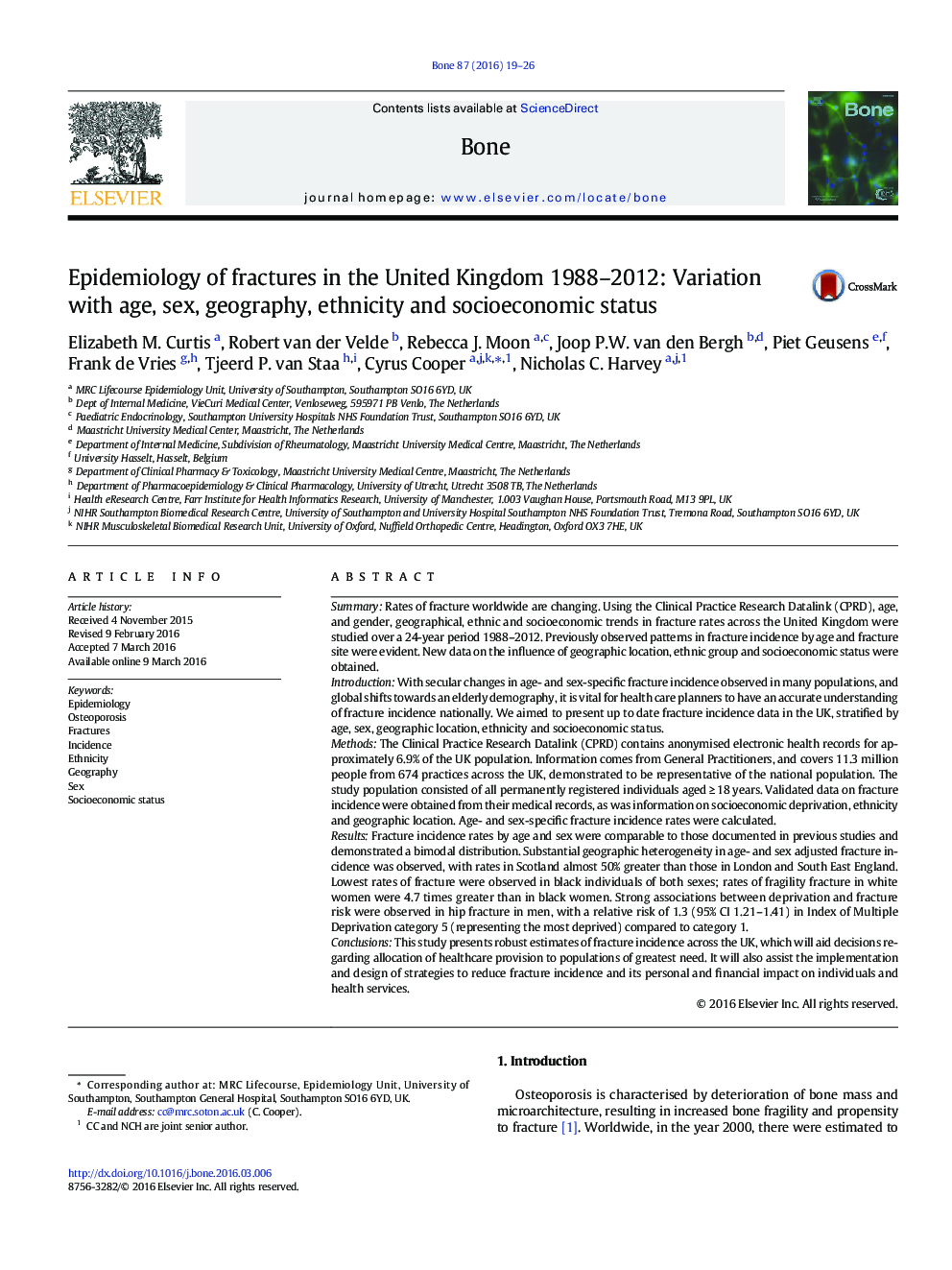| کد مقاله | کد نشریه | سال انتشار | مقاله انگلیسی | نسخه تمام متن |
|---|---|---|---|---|
| 5888884 | 1568132 | 2016 | 8 صفحه PDF | دانلود رایگان |

- We documented UK fracture incidence, stratifying by age, sex, geographic location, ethnicity and socioeconomic status.
- In men aged 50+Â years, the overall rate of fracture was 71.8/10,000Â py and in women 50+Â years it was 155.4/10,000Â py.
- There was heterogeneity in fracture incidence according to geographic location, ethnicity and socioeconomic status.
- These findings may inform public health policy in UK and elsewhere.
SummaryRates of fracture worldwide are changing. Using the Clinical Practice Research Datalink (CPRD), age, and gender, geographical, ethnic and socioeconomic trends in fracture rates across the United Kingdom were studied over a 24-year period 1988-2012. Previously observed patterns in fracture incidence by age and fracture site were evident. New data on the influence of geographic location, ethnic group and socioeconomic status were obtained.IntroductionWith secular changes in age- and sex-specific fracture incidence observed in many populations, and global shifts towards an elderly demography, it is vital for health care planners to have an accurate understanding of fracture incidence nationally. We aimed to present up to date fracture incidence data in the UK, stratified by age, sex, geographic location, ethnicity and socioeconomic status.MethodsThe Clinical Practice Research Datalink (CPRD) contains anonymised electronic health records for approximately 6.9% of the UK population. Information comes from General Practitioners, and covers 11.3 million people from 674 practices across the UK, demonstrated to be representative of the national population. The study population consisted of all permanently registered individuals aged â¥Â 18 years. Validated data on fracture incidence were obtained from their medical records, as was information on socioeconomic deprivation, ethnicity and geographic location. Age- and sex-specific fracture incidence rates were calculated.ResultsFracture incidence rates by age and sex were comparable to those documented in previous studies and demonstrated a bimodal distribution. Substantial geographic heterogeneity in age- and sex adjusted fracture incidence was observed, with rates in Scotland almost 50% greater than those in London and South East England. Lowest rates of fracture were observed in black individuals of both sexes; rates of fragility fracture in white women were 4.7 times greater than in black women. Strong associations between deprivation and fracture risk were observed in hip fracture in men, with a relative risk of 1.3 (95% CI 1.21-1.41) in Index of Multiple Deprivation category 5 (representing the most deprived) compared to category 1.ConclusionsThis study presents robust estimates of fracture incidence across the UK, which will aid decisions regarding allocation of healthcare provision to populations of greatest need. It will also assist the implementation and design of strategies to reduce fracture incidence and its personal and financial impact on individuals and health services.
Journal: Bone - Volume 87, June 2016, Pages 19-26